Clinton Foundation
"Autumn Landscape" by Harald Sohlberg (1910)
- Item Number
- 1274
- Estimated Value
- 150 USD
- Opening Bid
- 50 USD
Item Description
Details of this item
"Autumn Landscape" by Harald Sohlberg (1910)
Master Artist Museum Print
Size: 11.7" x 16.5"
Status: Unframed
About the Artist
In an obituary, Pola Gauguin wrote that as an artist, Harald Sohlberg was alone and forgotten: "A name which was famous in its day." Now that Sohlberg was dead, Gauguin thought, "the coldness which he helped surround it with, will thaw." Sohlberg's isolation was partly the tragic result of his wholehearted endorsement of the myth of genius as formulated by Romanticism and adopted by the Symbolists. Like Munch, he was obsessively preoccupied with denying that the influence of other contemporary artists had been important to him. He dissociated himself from the discussion about where he belonged in the history of art, relegating the origins of his artistic awakening outside of art to his own psyche.
Sohlberg wrote that his form sprang forth subconsciously from his first awareness of the landscape. The difference in texture of the sky and earth gave him a sense of standing on a heavy and firm planet gazing out into boundless space. He attributed the simple forms and great lines of his pictures to this first awareness of the landscape. The point of departure was the personal experience. Thus, the artist's experience of his subject preceded the picture. Sohlberg was preoccupied with the concrete local landscape that surrounded him and his emotional reaction to it. The place, in itself, was charged with meaning. For this reason, where he sought his subjects was important. He experienced the landscape in Norway as nature in strong and intense moods and gave form to the echoes of these moods in his mind. He agreed with many of his generation who, taking their point of departure in Andreas Aubert's writings about Norwegian art, were of the opinion that there existed distinctive, Nordic colors, clear and strong colors created by the clear, intense light of the North. Once artists realized this, it would be possible for an independent Nordic art to develop. Sohlberg believed that, along with the unique construction of the Nordic landscape, local color ought to result in a style of its own. Experience and interpretation of nature determined the choice of colors. For Sohlberg, the main color should assemble the picture and be as strong as possible.
The function of line in painting according to him was to express feelings. It could be lonely, down to earth, or melancholy. It could be willful and persevering as required. It should be developed according to the nature of the subject and the artist's dialogue with nature. Because the picture was bound by a perceived reality, Sohlberg paid tribute to reality by portraying it naturalistically. But his gaze carried with it the legacy of picture formulas that transformed and adapted nature. He was an artist who rarely put a stroke on the canvas before the picture was clear to him in his imagination. As an artist, he was a substitute viewer. What interested him was his own experience and interpretation, regardless of how naturalistic his pictures appeared to be. Ideally everything in the picture was controlled by his will.
As an older man, Sohlberg longed for confirmation that the public saw the values he wished to impart: "it is probably true that for simple and naive reasons my works have aroused sympathy. But I maintain that they have by no means been properly understood for the pictorial and spiritual values on which I have been working consistently throughout the years." The quotation contains three words which are keys to an understanding of Sohlberg: Pictorial, spiritual, and consistently. The pictorial is means for expressing the spiritual, and one was obliged to stick to the spiritual values one held true.
Item Special Note
SHIPPING AND HANDLING: $29.95
Museum Prints
Our "Museum Prints" selection includes works from artists such as Edgar Degas, Odilon Redon, Rembrandt, Pierre Auguste Renoir, Hieronymus Bosch, Henri Rousseau, Peter Paul Reubens, Sandro Botticelli, Egon Schiele, Georges Seurat, William Bouguereau, Vincent Van Gogh, Mary Cassatt, Paul Cezanne, Francis Bacon, Salvador Dali, William Blake, Juan Gris and Philip Guston.
PROCEEDS BENEFIT:
Clinton Foundation
Building on a lifetime of public service, President Bill Clintonestablished the William J. Clinton Foundation with the mission to alleviate poverty, improve global health, strengthen economies, and protect the environment, by fostering partnerships among governments, businesses, nongovernmental organizations, and private citizens — leveraging their expertise, resources, and passions — to turn good intentions into measurable results.
The William J. Clinton Foundation has received support from many notable celebrities including Samuel L. Jackson, Sarah McLachlanand Muhammad Ali.
How you can help
It is our goal at the Art4Good Foundation, Inc. to raise $1,000.00 in direct donations and proceeds resulting from ongoing on-line auctions in 2012, that also promote and support The Arts!
 We hope you will share our commitment and enthusiasm and join the team! You can join the team, donate 10 bucks, vote, invite others to jam with us, or simply keep track of our progress!
We hope you will share our commitment and enthusiasm and join the team! You can join the team, donate 10 bucks, vote, invite others to jam with us, or simply keep track of our progress!
Simply click on the 'heart' to see more!
ART+more4Good stores data...
Your support matters, so ART+more4Good would like to use your information to keep in touch about things that may matter to you. If you choose to hear from ART+more4Good, we may contact you in the future about our ongoing efforts.
Your privacy is important to us, so ART+more4Good will keep your personal data secure and ART+more4Good will not use it for marketing communications which you have not agreed to receive. At any time, you may withdraw consent by emailing Privacy@frontstream.com or by contacting our Privacy Officer. Please see our Privacy Policy found here PrivacyPolicy.

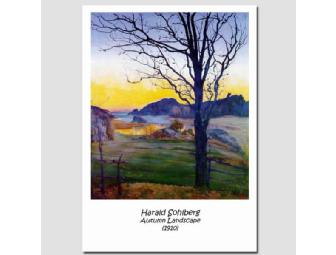
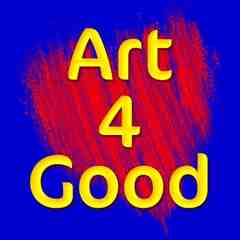
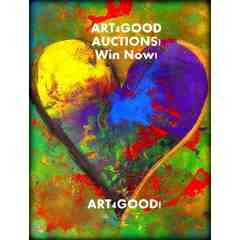

 ART4GOOD CHARITY NEWS EXCHANGE
ART4GOOD CHARITY NEWS EXCHANGE
 THE ARTIST IN YOU BLOG!
THE ARTIST IN YOU BLOG!
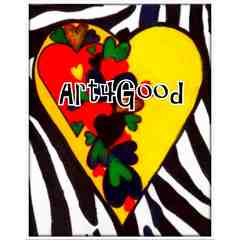 ART4GOOD ON FACEBOOK
ART4GOOD ON FACEBOOK
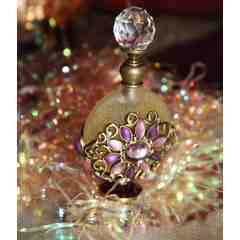 Femmena! The Essence of Love for the Epitome of Woman!
Femmena! The Essence of Love for the Epitome of Woman!
 THE ARTIST IN YOU ON TWITTER!
THE ARTIST IN YOU ON TWITTER!